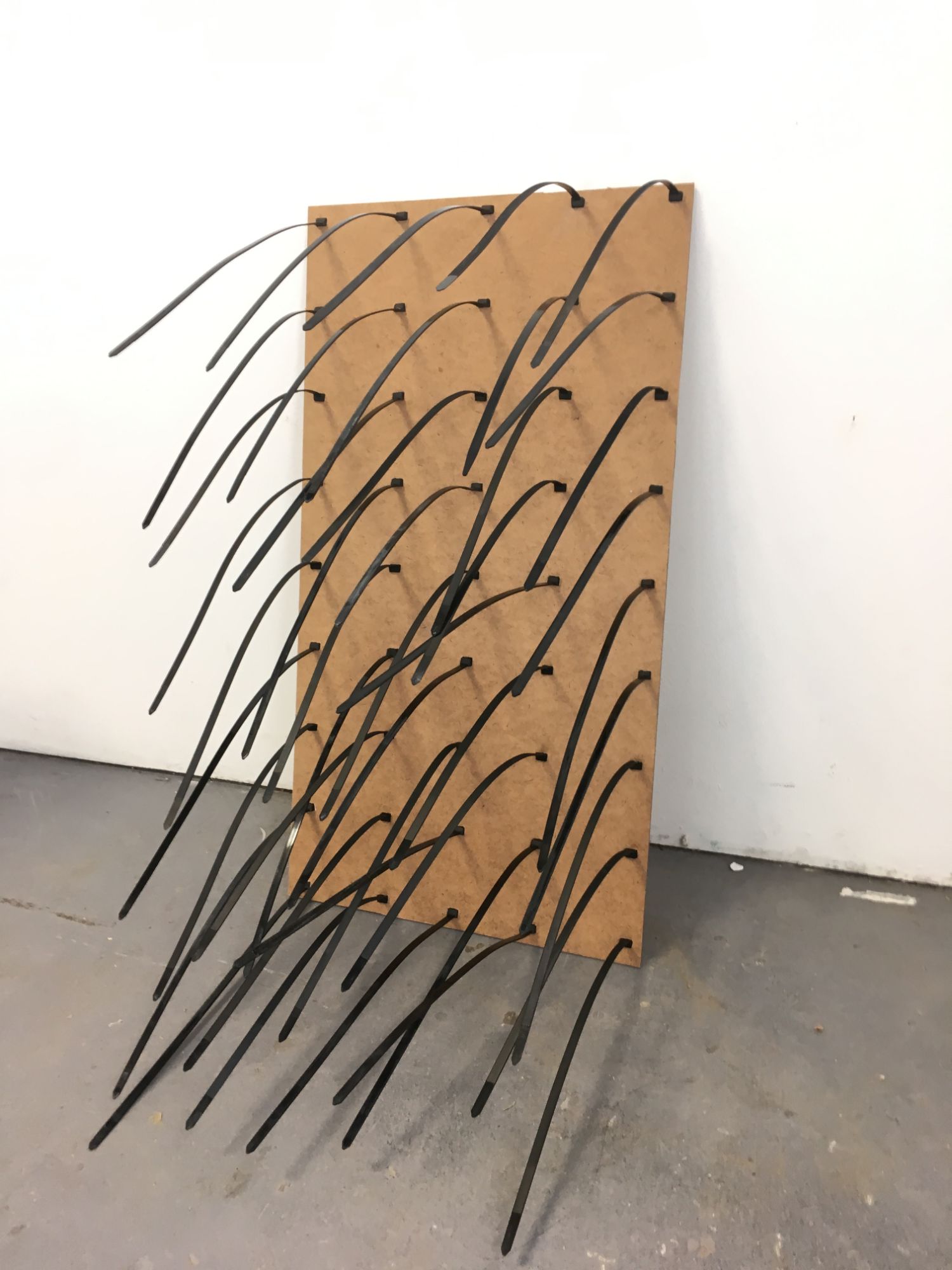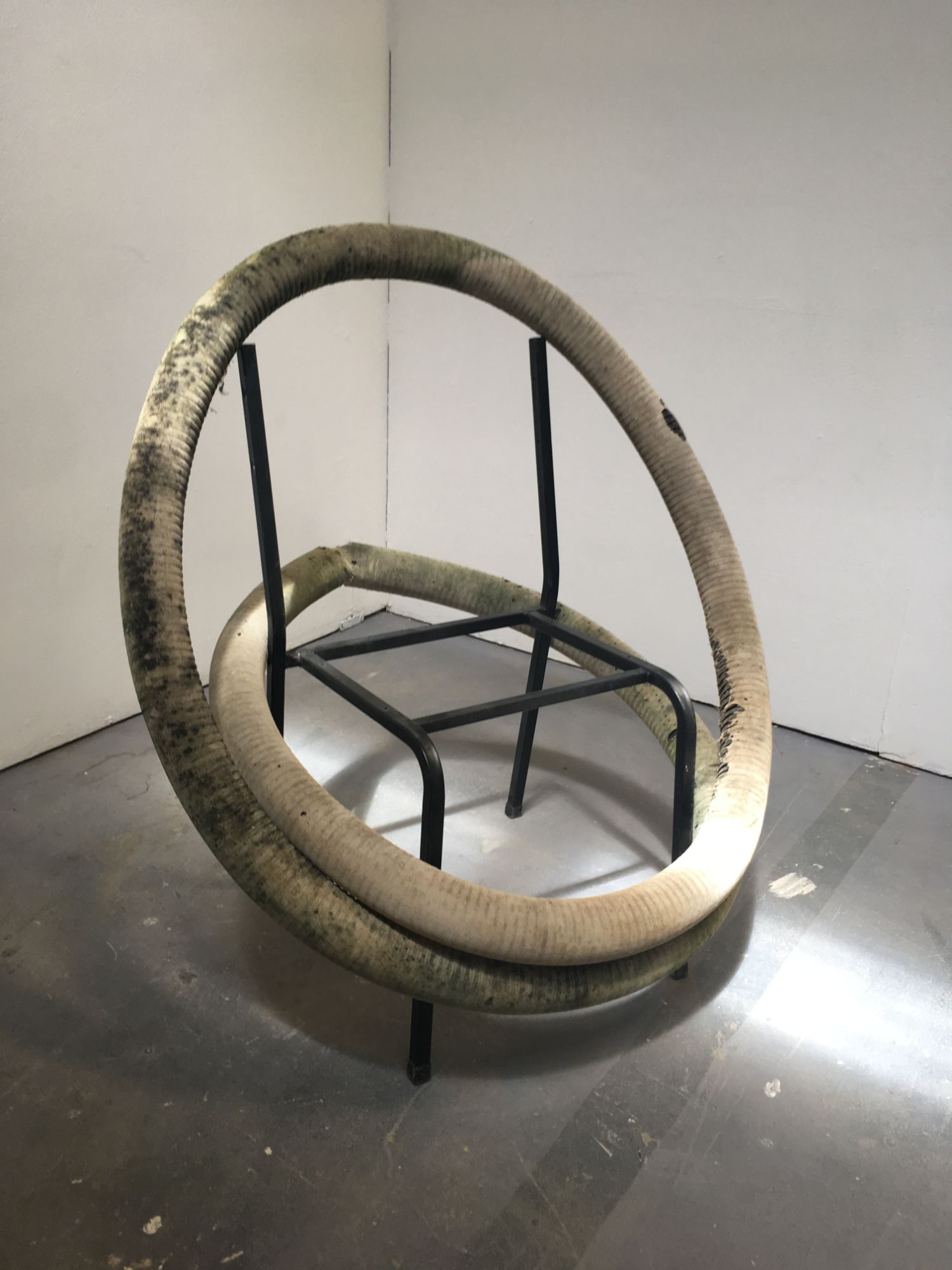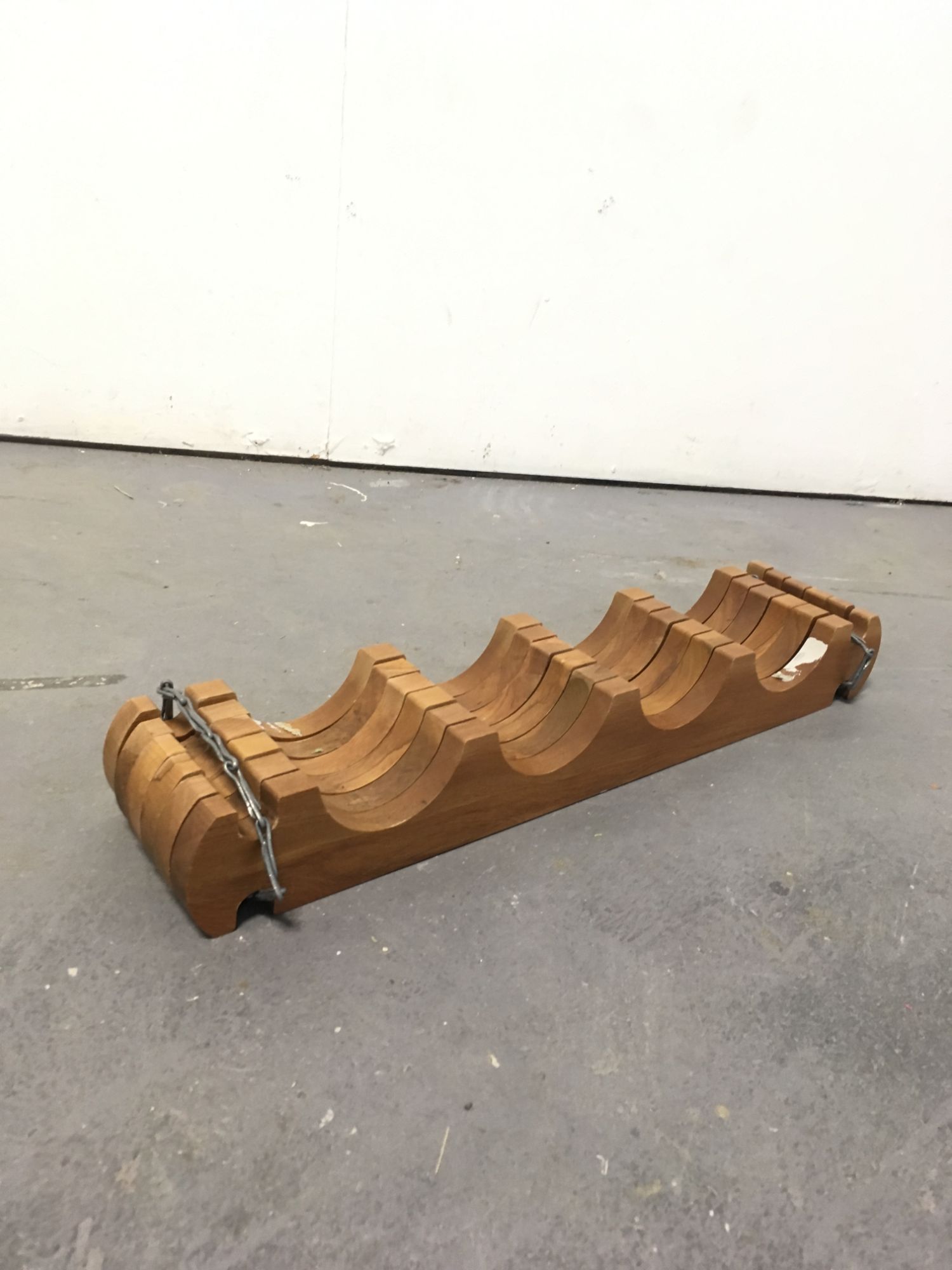BSMW, 2018, Bar soap and mesh wire.
CFLAPPTN, 2018, Canvas frame, linen, acrylic paint, plastic tubing, and nails.
WRSN, 2018, Wine rack and staple nails.
1 Flood, Richard, 1943- and New Museum (New York, N.Y.) Unmonumental : the object in the 21st century. Phaidon in 1 association with New Museum, London ; New York, 200
Dynamism of the re-rep (2018) explores the concept of re-contextualising common objects, forcing them to be reconsidered. When the object is removed from its original context and transposed, it is inherently challenged and freed from being a definitive form. Collecting, pressing, joining, assembling, cutting, melting, moulding and puncturing disregards the object’s context and function, allowing object to become material and material to become object. The combining of the ‘object’ with ‘materials’ has resulted in its re-representation; distinguishing itself from the original object’s function and specific meaning, resulting in a questioning of the conventional. Despite the objects being utilised in an nontraditional and nonfunctional manner - rendering their previous lives moot - there are still elements of familiarity.
Through their installation, the pieces discuss the relationship between sculpture and painting, and their distinguishing factors, most notably how presentation strategies impacts how they are classified. The works reject notions of the monument by avoiding its characteristic traits: medium specificity, raw materials, large scale, aggressive, phallic/plinth/monolith-like forms, unitary type, lack of meaning. Form, objects relationships to the human body and the visceral create poetic references to abstract embodiment in varying levels. The work plays with pre-established historical concepts of the ready made and assemblage art, concerning itself with ideas of re-representing mundane and everyday objects, which reject consumerist tendencies and the current anthropocentric attitude. The presence of selective aspects of minimalism and post-minimalism attest to an exploring of what it means to ‘build dynamism by gathering up and re-interpreting what is necessary from the past.’ 1




